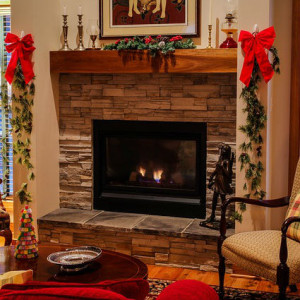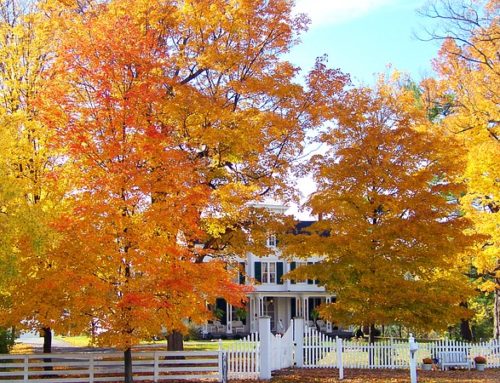Enjoy Your Fireplace Safely
A fireplace burning brightly in your house creates a cozy and relaxing feeling. Although, fireplaces can be beautiful and soothing, they can also be dangerous. For safe and responsible enjoyment, you need proper maintenance and common sense.
Chimney Inspection and Cleaning: Improper chimney maintenance can result in house fires. Inspections are needed to make sure the chimney liner is not cracked or covered with creosote that could cause a chimney fire. The time between inspections depends on how often you use your wood-burning fireplace and the type of wood burned. If you only use the fireplace once or twice a week during the winter months, then inspections and cleaning every two years should be adequate. If you use it more often, then have the inspection done annually.
Use a Reputable Chimney Sweep: Choose a company to maintain your fireplace and chimney that has been in business in your area for many years. Look online for favorable reviews.
Burn the Right Wood: Use hardwoods, such as maple and oak, that have been seasoned for at least six months. Don’t burn wood from evergreen trees, cardboard boxes, or lumber. These produce too much smoke and creosote.
Keep the Hearth Clear: Keep flammable materials far away from the fireplace. Use a glass or metal screen to prevent popping embers from flying out and starting a fire.
Don’t Overload: Don’t put too much wood in the fireplace at one time. The lack of adequate air spaces will cause more smoke to be produced and speed up creosote buildup in the chimney. You also do not want the fire to get too hot, which could damage the fireplace and flue linings.
Clean Ashes: Remove the ashes from the fireplace when they reach the bottom of the firewood grate and restrict airflow to the fire. Embers can smolder for many hours and possibly several days. Make sure the ashes are completely cool before removing them. Wait at least until the next day. Even then, don’t put ashes in paper bags or cardboard boxes that are put in the garage.
Keep Flue Open Until All Burning Has Ceased: The smoke from burning wood contains carbon monoxide. In order to prevent this toxic gas from entering your home leave the flue open overnight. Glass doors on a fireplace can be closed to keep air in the house from going up the chimney. Don’t close the damper between the firebox and chimney until the morning when all embers have stopped burning. Leave a fireplace tool out on the hearth to remind you to close the damper in the morning.
Install a Chimney Cap: At minimum, install a mesh screen chimney cap that prevents sparks from escaping. Some types of caps can be closed when the fireplace is not in use. Both kinds also keep animals out of the chimney. Make sure no tree branches are near the top of the chimney.
Install and Check Detectors: Make sure you have working smoke and carbon monoxide detectors placed throughout your home. Replace batteries once per year and replace the detectors every 10 years. Many new detectors come with batteries that last the 10-year life of the devices.
More fireplace safety tips are available Here from the Consumer Product Safety Commission.


Leave A Comment